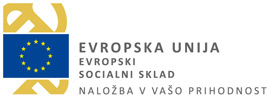Diplomirani umetnostni zgodovinar (un) in …/diplomirana umetnostna zgodovinarka (un) in …
Selected qualifications
| Name of qualification | Name of qualification: Diplomirani umetnostni zgodovinar (un) in …/diplomirana umetnostna zgodovinarka (un) in …Add to comparison |
|---|---|
| Translated title (no legal status) | Translated title: Bachelor of Arts in history of art and... |
| Type of qualification | Type of qualification: Academic bachelor's degree |
| Category of qualification | Category of qualification: Educational Qualification |
| Type of education | Type of education: Academic bachelor's education |
| Duration |
Duration of education:
3 years
|
| Credits | Credits: 180 credits |
| Admission requirements |
Entry conditions:
|
| ISCED field |
Field:
Arts and humanities
|
| ISCED subfield | subfield: humanities (except languages) not elsewhere classified |
| Qualification level |
SQF Level:
SQF 7 |
- think in a logical, abstract, analytical and synthetic way,
- participate in the resolution of technical issues,
- demonstrate familiarity with basic research methods and transfer them creatively from one field to another,
- integrate acquired knowledge across the two disciplines and with other, different fields,
- transfer own knowledge to other problem areas (ability to transfer) and address them in an interdisciplinary manner,
- demonstrate flexibility when defining and addressing concrete issues,
- demonstrate a more comprehensive approach to recording and addressing problems,
- apply two different technical discourses that enable clearer argumentation,
- communicate on the basis of understanding of two perspectives, in a manner that facilitates successful inclusion in teamwork,
- contextualise information from a double perspective,
- respond competently and adapt to new challenges and/or their modification,
- demonstrate a commitment to professional ethics and develop reflection on ethics, including in the wider social context,
- collect bibliographic and other data from databases and other sources,
- use ICT to find, select, process and present information,
- participate in the assessment and quality assurance of own work,
- develop and participate in the development of effective interpersonal relations,
- continuously build on already acquired knowledge and show willingness to build on it,
- collect and use data,
- analyse and synthesise,
- apply acquired knowledge in practice,
- communicate acquired knowledge in a coherent form,
- place new information and interpretations in context,
- demonstrate ethical self-reflection and a commitment to professional ethics,
- demonstrate familiarity with the basis and history of the history of art,
- demonstrate a critical, rational view of the past,
- demonstrate understanding of events, processes, changes and continuities in a diachronic perspective,
- demonstrate understanding of the position of artistic events in history,
- demonstrate awareness of the changing historical interests, categories and problems that are reflected in the fine arts.
In order to progress to the second year, students must have completed all course units prescribed by the curriculum and individual syllabuses for the first year, for a total of 60 credits, while in order to progress to the third year students must have completed all course units prescribed by the curriculum and individual syllabuses for the second year, for a total of 60 credits; in other words a total of 120 credits for the first and second years.
Diplomirani umetnostni zgodovinar (un) in …/diplomirana umetnostna zgodovinarka (un) in …
SQF 7
EQF 6
The Career path tab shows the possible career path within the selected qualification area, which is not the only one and is not mandatory. The actual transition between qualifications, which is determined by law, is defined in the Transition tab.
SQF 8 / EQF 7
Second-cycle master's study programmes (SQF level 8)
To complete their studies, students must complete all course units prescribed by the study programme and the syllabuses of individual subjects, for a total of 90 credits. Studies are only fully completed when students have completed all course units in both chosen disciplines, as laid down by the study programmes and syllabuses of individual subjects, for a total of 180 credits.
University of Ljubljana, Faculty of Arts
URL
Awarding body URL:Upcoming event
International Conference: 10 years of Slovenian Qualifications Framework
International Conference: 10 years of Slovenian Qualifications Framework Brdo Congress Centre, Predoslje 39, 4000...
© Center RS za poklicno izobraževanje, 2018. All rights reserved
Sitemap General legal notice Cookie Policy Production: ENKI






